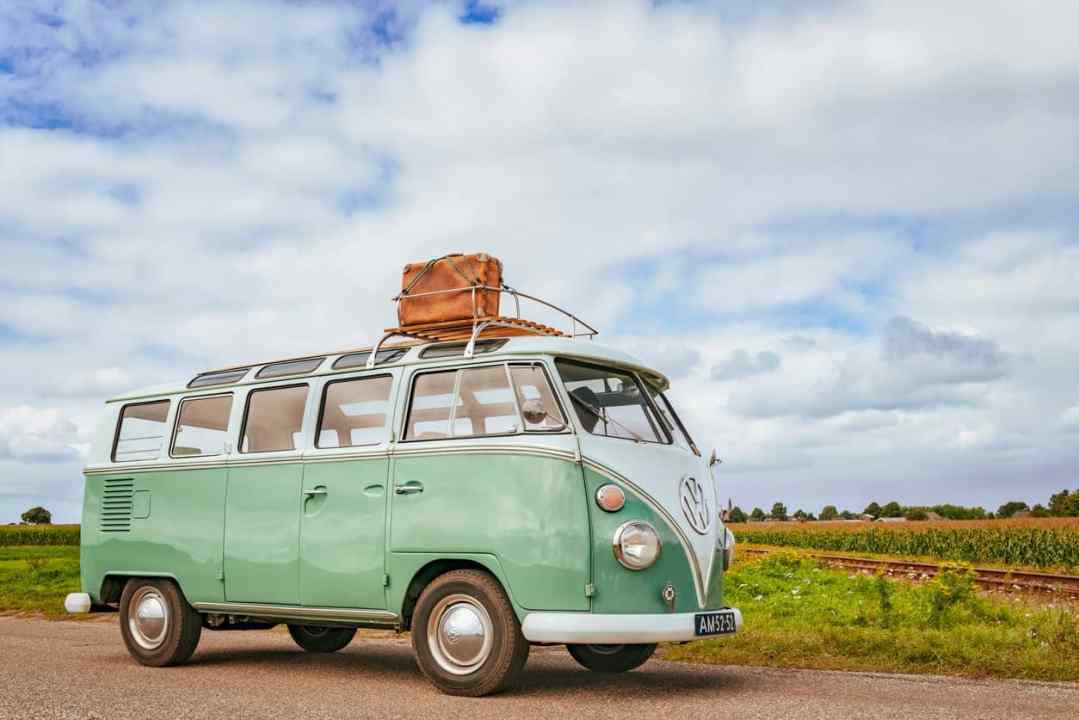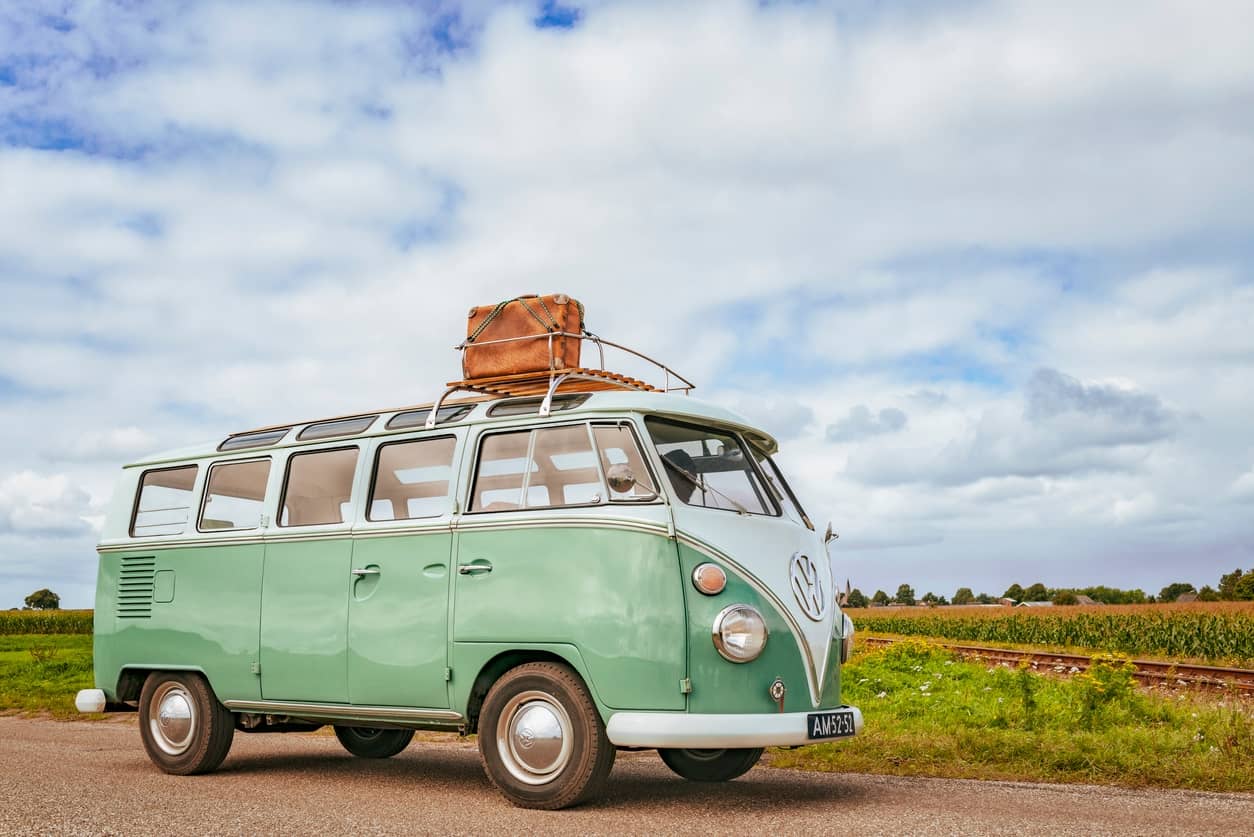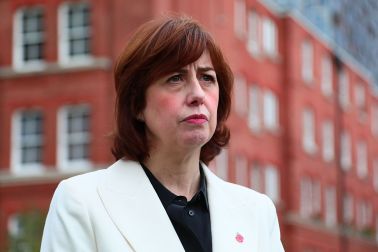Britain’s staycation charge has seen thousands of people buying campervans for the first time, not least the classic VWs beloved of hippies, surfers and generations of families whose definition of a good day out is a Thermos flask of tea.
These clattery, engine-in-the-back vehicles already had cult status, but it seems the pandemic has supercharged their appeal, with demand for VW campers soaring both before and after lockdown. But what’s it like living with a box on wheels originally conceived seventy plus years ago?
Fun, according Midlands-based Graham ‘Dougie’ Douglas, who owns two 1966 and ’67 vans, the latter, a retired Austrian police minibus, bought on a whim in 2006 when his wife and family were out and he had nothing but eBay for company.
She wasn’t enthusiastic, but if we lost everything, my wife would want it to be the last thing to go,’ said Dougie, who reckons one of his van’s great virtues is that it slows everything down.
‘You don’t really do more than 50-60mph. People rush past on the motorway, and you think: “what’s the hurry?”’
A practical sort, Dougie kitted his out as a camper, but recently ripped out all the cupboards (‘It took an hour to load and I kept losing stuff’). Now there’s just a foldaway ‘rock ‘n roll’ bed (‘it’s bigger than the one in our house’) and 2ft x 3ft plastic storage boxes for cooking utensils and clothes – a world away from the showers and TVs found in some modern vehicles, but Dougie appreciates the simplicity.
‘It’s very basic, the way camping was when I was a kid, but you can be away in twenty minutes.’
Kent-based Len and Christina Kay bought their 1979 Danbury VW camper about a decade ago. Although it’s been mechanically reliable, one of the door windows fell in the first time he drove it, and after four years of patching, it required some serious work. Now the van is used as a second car (‘it goes to the dump’) and is a repository of many happy holiday memories, although the Kays bought an awning to create camping space for a family of five. Its owners only regret is that it would cost thousands to insure it for their now grown up children to drive it, although Len himself only pays £70 a year for a specialist, limited mileage policy.
South London-based Jo and Guillaume Baut-Menard don’t have that problem yet, being the parents of children aged 13, 11 and three. Their 1974-made camper, known as Eugene, is greatly loved, but was bought because their previous van, Harry, was stolen. ‘It was quite traumatic. We’d had the van for about ten years and spent seven restoring it. We used it all the time. It was even part of our wedding,’ said Guillaume.
They’ve since bonded with Eugene, which has a ‘pop top’ concertina roof that creates a small, loft-style bedroom which three-year-old daughter Elise has commandeered. The van’s compact size -it’s little bigger than a modern sports utility- makes for relatively easy parking, although if the entire family go camping, some of them sleep in tents.
‘It’s the freedom Jo and I love the most. We can go camping on a whim for a single night and come back the next day,’ said Guillaume, adding that Eugene was about to be used to meet Brighton-based friends ‘halfway between our homes.’
‘It’s a case of “where are we going tomorrow?” rather than always booking and knowing in advance.’
South West London-based Lauren and Ben Marshall bought their 1972 camper ‘Dolly the Dub’ in August 2020. ‘They’ve always been my dream vehicle,’ said Lauren. A combination of Pandemic travel restrictions and the arrival of twin daughters Grace and Rose (now aged two) turned the dream into a reality.
Dolly has also been used as a home office and a DIY pizza restaurant. ‘It’s a really functional space.’

The Marshalls and their dachshund Bentley have explored a small ‘quiet’ campsite where the twins could nap in the afternoon and make friends with free range chickens and pigmy goats. They’ve also tried out a big ‘family’ site where the children have enjoyed organised events, and have longer term plans to camp in Spain and Scandinavia. Lauren would like to see the Northern Lights from the van, something that would currently be helped by its folding roof’s lack of canvas sides. Fitting them is on the Marshall’s ‘to do list.’
She is also offering the van as a wedding hire vehicle. The couple enjoy the goodwill their veteran camper engenders, and the friends they’ve made in the owner’s club (see below).
‘It’s a way for us to travel without the stress of flying. If the weather’s good, we can just get into it and go.’
Know your VW camper
1949-67. These ‘Type 2’ vans had beaky front ends and windscreens made of two panes of glass, earning them the nicknames of ‘Split,’ or ‘Splitty.’ They are the most collectable VW campers.
1967-2013. These slightly bigger vans had single piece front screens and rounded noses. Confusingly, VW still called them Type 2s. Fans call them ‘Bays’ (as in ‘bay window’). German production stopped in 1979, but they were made in Brazil until 2013.
1979-2002. Unofficially known as the Wedge thanks to its raked front end, the T3, or T25 van still has its engine in the back and is bigger, safer, more practical and less coveted than its predecessors, although values have shot up and demand is strong. Most of the ones here were built before 1991, but it lived on in South Africa until 2002.







Comments